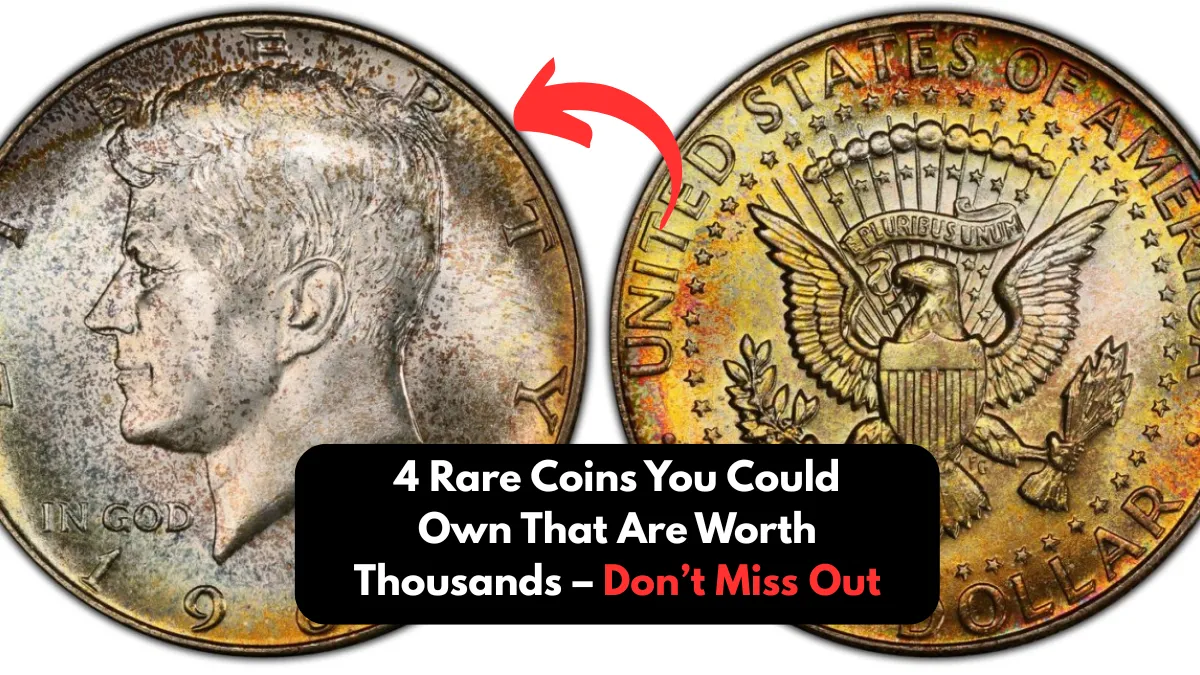Most people don’t pay attention to the coins lying around in drawers, piggy banks, or loose change jars. But hidden among them could be a small fortune—if you know what to look for. Some rare coins are worth thousands of dollars, and the best part? You might already own one and not even realize it.
Here are four of the most valuable rare coins that have been found in everyday circulation. Each one tells a fascinating story—and each one could change your financial life overnight.
1. 1943 Bronze Lincoln Wheat Penny
- Estimated Value: $100,000 to over $1 million
- Why It’s Rare: Minting error during wartime
- How to Spot It: Test with a magnet – it shouldn’t stick
During World War II, the U.S. Mint switched from using copper to steel for pennies to save copper for military equipment. So, almost all 1943 pennies were made from zinc-coated steel. However, a small number of bronze blanks from 1942 were mistakenly used to strike a few 1943 pennies. These error coins are incredibly rare—only a handful exist.
If you have a 1943 penny that doesn’t stick to a magnet, it could be one of these rare bronze versions. Get it authenticated immediately—it could be worth six or even seven figures at auction.
2. 1916-D Mercury Dime
- Estimated Value: $1,000 to $15,000+
- Why It’s Rare: Extremely low mintage
- How to Spot It: Look for “D” mint mark on the back under “ONE DIME”
The 1916 Mercury Dime is already iconic for its beautiful design, featuring Liberty wearing a winged cap (mistaken by many as the Roman god Mercury). But the version minted in Denver (with a “D” mint mark) is particularly special. Only about 264,000 of these were ever made, making it one of the lowest production coins of the 20th century.
If you have any Mercury dimes, be sure to check the date and look for the “D” on the reverse. Even worn versions of this coin can sell for thousands of dollars.
3. 1955 Doubled Die Lincoln Penny
- Estimated Value: $500 to $2,000+
- Why It’s Rare: Minting error created doubled images
- How to Spot It: Obvious doubling in the words “LIBERTY” and “IN GOD WE TRUST”
This is one of the most famous error coins in U.S. history. A misalignment during the minting process caused the design to be stamped twice, slightly off-center. The result? A clear doubling effect on the front of the coin—especially in the text and date.
You don’t need a magnifying glass to spot this error. If your 1955 penny has blurry or doubled letters and numbers, it might be the valuable doubled die version. These coins are highly prized by collectors and can bring in big money, even in lower grades.
4. 2004 Wisconsin State Quarter – Extra Leaf Variety
- Estimated Value: $200 to $1,500+
- Why It’s Rare: Unintentional die flaw during minting
- How to Spot It: Look for an extra leaf on the ear of corn (either high or low)
Part of the U.S. Mint’s 50 State Quarters Program, the 2004 Wisconsin quarter includes a special edition that features a corn stalk. In some coins from the Denver Mint, a small extra leaf appears either high or low on the left side of the corn ear—something that wasn’t intended.
These quarters made headlines when they were discovered in circulation. Though not as rare as the other coins on this list, they’re still worth far more than face value, especially in good condition.
Why Rare Coins Are Still Found in Circulation
Many of these valuable coins ended up in circulation before their rarity was known. Others may have been passed down through families or mixed into jars of change without a second thought. Because most people don’t check their coins closely, it’s entirely possible that treasures are still out there—waiting to be discovered.
How to Tell if Your Coin Is Valuable
Here are a few tips to help you spot a valuable coin:
- Check the date and mint mark: Rare years and specific mint locations (like “D” for Denver or “S” for San Francisco) often mean higher value.
- Look for odd features: Errors like doubling, missing letters, or unusual metal can indicate rarity.
- Use a magnet: This trick helps identify metal differences, especially for coins like the 1943 penny.
- Research before selling: Always get your coin examined by a certified dealer or grading service. Some coins may look normal but be worth a lot based on slight differences.
Final Thoughts
You never know what you might find in your pocket or change jar. These four coins prove that hidden treasures don’t always come in gold or silver—they might be hiding in plain sight, in the form of everyday U.S. currency.
So take a few minutes, grab your loose change, and start checking. That simple penny, dime, or quarter could be worth thousands—and become a collector’s dream.
